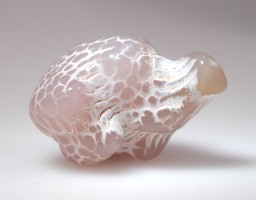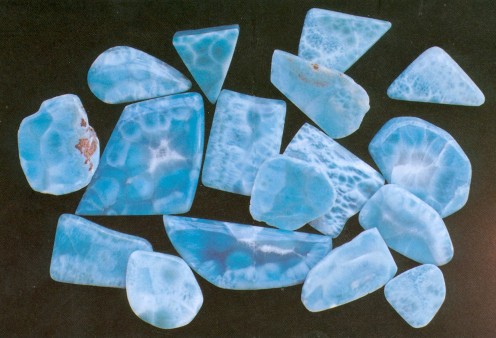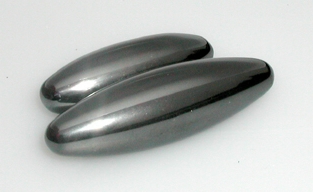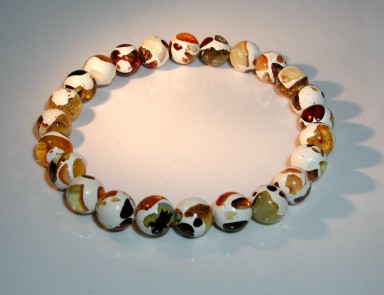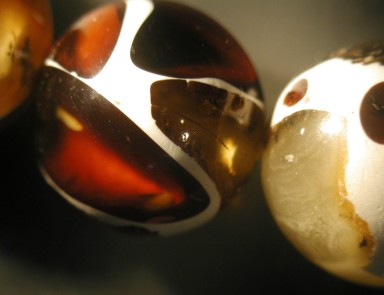At the beginning of the new millenium, a colorful rock with the name »Rainbow Calsilica« appeared for the first time on mineral fairs. This rock is caracterisized by its striking layers of intensive blue, brown, white and green colors.
According to American and German studies this material was supposed to consist of microcrystalline calcite, deriving its colors from Allophane, a clay mineral. It was suspected that this rock had naturally formed as a crack filling in a volcanic rock (Rhyolite). But all of theses assumptions were wrong.
More accurate examinations by the EPI laboratory and other gemmological labs came to an entirely different conclusion. The mineral Allophane typically occurs in acid soils. Until now it has never been detected in solid rocks, since it decomposes immediately during petrogenetic processes. An X-ray diffraction (XRD) analysis showed that the blue, yellow and green strips solely contain calcite. However, since Allophane is amorphous in X-ray , supplementary methods of testing were required to detect the chromophoric substances.




